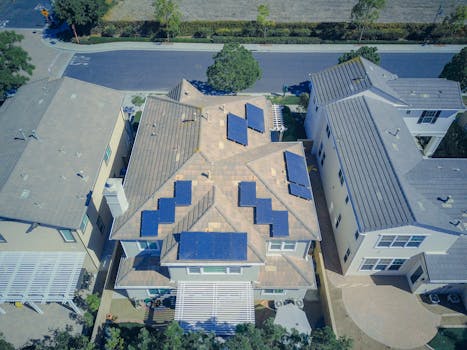“Master Your Solar: Quick Fixes for Common Mounting System Issues!”
Troubleshooting common issues with solar mounting systems is essential for ensuring optimal performance and longevity of solar energy installations. These systems, which support solar panels and secure them to rooftops or the ground, can encounter various problems that may affect energy production and structural integrity. Common issues include misalignment, corrosion, loose components, and inadequate load-bearing capacity. By systematically identifying and addressing these challenges, solar installers and homeowners can enhance the efficiency of their solar systems, prevent costly repairs, and maximize their return on investment. This guide will outline key troubleshooting steps and best practices to effectively resolve typical problems associated with solar mounting systems.
Identifying Loose Connections in Solar Mounting Systems
When it comes to solar mounting systems, ensuring that all components are securely connected is crucial for optimal performance and longevity. Loose connections can lead to a variety of issues, including reduced energy output, increased wear on components, and even safety hazards. Therefore, identifying and addressing these loose connections is a vital step in maintaining the efficiency of your solar installation.
To begin with, it is essential to understand the common areas where loose connections may occur. These typically include the junction boxes, where electrical connections are made, as well as the mounting brackets that secure the solar panels to the roof or ground. Over time, vibrations from wind or other environmental factors can cause these connections to loosen, leading to potential problems. Consequently, regular inspections are necessary to catch these issues before they escalate.
When inspecting your solar mounting system, start by visually examining all connections. Look for any signs of wear, corrosion, or physical damage. If you notice any loose bolts or screws, it is imperative to tighten them using the appropriate tools. However, it is important to avoid overtightening, as this can strip the threads or damage the components. Instead, apply a firm but gentle pressure to ensure a secure fit.
In addition to visual inspections, it is advisable to perform electrical tests to identify any loose connections that may not be immediately visible. Using a multimeter, you can check for continuity in the wiring and connections. If you detect any irregularities, such as fluctuating voltage readings, this may indicate a loose connection that requires further investigation. By conducting these tests regularly, you can proactively address issues before they impact the performance of your solar system.
Moreover, it is essential to consider the environmental factors that may contribute to loose connections. For instance, extreme weather conditions, such as heavy winds or snow loads, can place additional stress on mounting systems. Therefore, it is wise to assess the structural integrity of your installation after severe weather events. If you notice any shifts in the alignment of the panels or mounting brackets, this could be a sign that connections have loosened and need to be addressed.
Furthermore, it is beneficial to familiarize yourself with the manufacturer’s guidelines for your specific solar mounting system. These guidelines often include recommendations for regular maintenance and inspection intervals. Adhering to these guidelines not only helps in identifying loose connections but also ensures that your system operates within its designed parameters.
In addition to routine inspections, consider implementing a maintenance log to track any issues and repairs made over time. This log can serve as a valuable resource for identifying patterns or recurring problems, allowing you to take preventive measures before they become significant issues.
Ultimately, identifying and addressing loose connections in solar mounting systems is a critical aspect of maintaining the efficiency and safety of your solar installation. By conducting regular inspections, performing electrical tests, and adhering to manufacturer guidelines, you can ensure that your system operates at peak performance. Taking these proactive steps not only enhances the longevity of your solar investment but also contributes to the overall reliability of renewable energy solutions in your home or business.
Diagnosing Misalignment Problems in Solar Panels

Diagnosing misalignment problems in solar panels is crucial for ensuring optimal energy production and system efficiency. When solar panels are not properly aligned, they may not capture sunlight effectively, leading to reduced energy output. To begin troubleshooting misalignment issues, it is essential to understand the common causes and symptoms associated with this problem. One of the first indicators of misalignment is a noticeable drop in energy production. If the system’s output is consistently lower than expected, it may be time to investigate the alignment of the panels.
To diagnose misalignment, start by visually inspecting the solar array. Look for any panels that appear tilted or uneven compared to their neighbors. This visual check can often reveal obvious issues, such as panels that have shifted due to wind or improper installation. Additionally, it is important to assess the mounting system itself. If the mounting brackets are loose or damaged, they may allow the panels to shift out of alignment. Tightening or replacing these components can often resolve the issue.
Once the visual inspection is complete, the next step is to measure the angle and orientation of the solar panels. Using a digital inclinometer or a level, check the tilt angle of each panel. Ideally, solar panels should be installed at an angle that maximizes their exposure to sunlight, which typically varies based on geographic location and season. If the panels are not at the correct angle, adjustments may be necessary. Furthermore, ensure that the panels are oriented towards the sun, usually facing south in the Northern Hemisphere and north in the Southern Hemisphere. Misalignment in orientation can significantly impact energy production, so it is vital to confirm that the panels are positioned correctly.
In addition to physical inspections and measurements, monitoring the system’s performance data can provide valuable insights into potential misalignment issues. Many modern solar systems come equipped with monitoring software that tracks energy production in real-time. By analyzing this data, you can identify patterns or anomalies that may indicate misalignment. For instance, if certain panels consistently underperform compared to others, it may suggest that they are not receiving adequate sunlight due to misalignment or shading from nearby objects.
If misalignment is suspected but not easily identifiable through visual inspection or performance data, it may be beneficial to conduct a more thorough analysis. This can involve using tools such as a solar pathfinder or shading analysis software to evaluate how shadows from nearby trees, buildings, or other obstructions may be affecting the panels’ performance. Understanding the shading patterns throughout the day can help pinpoint specific times when misalignment or shading issues are most pronounced.
Once the source of the misalignment has been identified, corrective actions can be taken. This may involve adjusting the tilt or orientation of the panels, reinforcing the mounting system, or even relocating the array to a more suitable location. In some cases, consulting with a professional installer or solar technician may be necessary to ensure that the adjustments are made correctly and safely.
In conclusion, diagnosing misalignment problems in solar panels requires a combination of visual inspections, performance monitoring, and analytical tools. By systematically evaluating these factors, you can identify and address misalignment issues, ultimately enhancing the efficiency and effectiveness of your solar energy system. Taking the time to troubleshoot these common problems not only maximizes energy production but also extends the lifespan of the solar installation, ensuring a reliable and sustainable energy source for years to come.
Resolving Corrosion Issues in Mounting Hardware
Corrosion in solar mounting hardware is a significant concern that can compromise the integrity and longevity of solar panel installations. As solar energy systems are often exposed to various environmental conditions, understanding how to identify and resolve corrosion issues is essential for maintaining optimal performance. The first step in addressing corrosion is to recognize its signs. Common indicators include discoloration, rust formation, and pitting on metal surfaces. These symptoms can often be traced back to inadequate protective coatings or the use of substandard materials that are not suited for outdoor conditions. Therefore, regular inspections of the mounting hardware are crucial to catch these issues early.
Once corrosion is identified, the next step is to determine its extent. If the corrosion is superficial, it may be possible to clean the affected areas using a wire brush or sandpaper. This process removes the rust and allows for a fresh application of protective coatings, such as paint or galvanization, which can help prevent future corrosion. However, if the corrosion has penetrated deeper, compromising the structural integrity of the mounting hardware, replacement may be necessary. In such cases, it is vital to source high-quality materials that are specifically designed for outdoor use, such as stainless steel or aluminum alloys, which offer superior resistance to corrosion.
In addition to addressing existing corrosion, it is equally important to implement preventive measures. One effective strategy is to ensure that all mounting hardware is properly installed and that there is no accumulation of debris or moisture around the components. This can be achieved by regularly cleaning the area and ensuring that drainage is adequate. Furthermore, applying protective coatings during installation can significantly enhance the longevity of the hardware. For instance, using a corrosion-resistant primer before painting can create a barrier that protects the metal from moisture and environmental pollutants.
Another critical aspect of preventing corrosion is the selection of compatible materials. When different metals come into contact, galvanic corrosion can occur, leading to accelerated deterioration. To mitigate this risk, it is advisable to use similar metals for all mounting components or to employ insulating materials, such as rubber or plastic washers, to separate dissimilar metals. This simple yet effective approach can significantly reduce the likelihood of corrosion and extend the lifespan of the mounting system.
Moreover, environmental factors play a crucial role in the rate of corrosion. Areas with high humidity, saltwater exposure, or industrial pollution are particularly susceptible to accelerated corrosion. In such environments, it may be beneficial to conduct more frequent inspections and maintenance. Additionally, considering the installation of sacrificial anodes can provide an extra layer of protection, as these anodes corrode preferentially, thereby protecting the more critical components of the mounting system.
In conclusion, addressing corrosion issues in solar mounting hardware requires a proactive approach that includes regular inspections, timely maintenance, and the use of high-quality materials. By understanding the signs of corrosion and implementing effective preventive measures, solar energy system owners can ensure the longevity and reliability of their installations. Ultimately, a well-maintained solar mounting system not only enhances the performance of solar panels but also contributes to the overall sustainability of renewable energy solutions.
Troubleshooting Grounding and Electrical Issues in Solar Installations
When it comes to solar installations, grounding and electrical issues can pose significant challenges that may affect the overall performance and safety of the system. Understanding how to troubleshoot these common problems is essential for ensuring that your solar energy system operates efficiently and reliably. One of the first steps in addressing grounding issues is to verify that the grounding system is properly installed. This involves checking the grounding electrodes, which should be securely connected to the solar array and the inverter. A loose or corroded connection can lead to inadequate grounding, resulting in potential safety hazards and reduced system performance.
In addition to inspecting physical connections, it is crucial to measure the resistance of the grounding system. Ideally, the resistance should be below 25 ohms, as higher resistance can indicate poor grounding. If the resistance is too high, it may be necessary to add additional grounding rods or improve the connection to existing ones. This process not only enhances safety by reducing the risk of electrical shock but also ensures that the system can effectively dissipate any fault currents that may occur.
Transitioning from grounding issues to electrical problems, it is important to regularly monitor the performance of the solar inverter. The inverter is a critical component that converts the direct current (DC) generated by the solar panels into alternating current (AC) for use in your home or business. If the inverter is not functioning correctly, it can lead to decreased energy production and potential system failures. One common issue is the inverter displaying error codes, which can indicate various problems ranging from grid connection issues to internal faults. Consulting the inverter’s manual can provide insights into the specific error codes and recommended troubleshooting steps.
Moreover, checking the wiring connections between the solar panels, inverter, and electrical panel is essential. Loose or damaged wires can lead to voltage drops, which can significantly impact the efficiency of the system. Inspecting the wiring for signs of wear, such as fraying or discoloration, is a proactive approach to preventing electrical issues. If any damaged wires are found, they should be replaced immediately to maintain the integrity of the system.
Another aspect to consider is the performance of the solar panels themselves. Over time, dirt, debris, and even bird droppings can accumulate on the surface of the panels, reducing their efficiency. Regular cleaning and maintenance of the panels can help mitigate this issue. Additionally, shading from nearby trees or buildings can also impact energy production. It is advisable to assess the installation site periodically to ensure that no new obstructions have arisen that could cast shadows on the panels.
Furthermore, monitoring the overall energy output of the system can provide valuable insights into its performance. By comparing the actual energy production to the expected output based on solar irradiance data, you can identify any discrepancies that may indicate underlying issues. If the energy output is consistently lower than expected, it may warrant a more in-depth investigation into the system’s components.
In conclusion, troubleshooting grounding and electrical issues in solar installations requires a systematic approach that includes inspecting connections, measuring resistance, monitoring inverter performance, and maintaining the solar panels. By addressing these common problems proactively, you can ensure that your solar energy system operates at peak efficiency, providing reliable and sustainable energy for years to come.
Q&A
1. **Question:** What should I check if my solar panels are not producing expected energy output?
**Answer:** Inspect for shading on the panels, ensure all connections are secure, check the inverter for error codes, and verify that the panels are clean and free of debris.
2. **Question:** How can I identify if there is a problem with the mounting system?
**Answer:** Look for signs of physical damage, such as bent or rusted brackets, check for loose bolts or fasteners, and ensure that the panels are securely attached and not shifting.
3. **Question:** What steps should I take if my solar inverter is showing an error message?
**Answer:** Refer to the inverter’s manual for specific error codes, reset the inverter if possible, check for any tripped circuit breakers, and ensure that the inverter is receiving adequate sunlight.
4. **Question:** How do I troubleshoot water pooling around the solar mounting system?
**Answer:** Inspect the drainage around the mounting system, ensure that the mounting brackets are installed at the correct angle, and check for any blockages in the drainage pathways.
Conclusion
To troubleshoot common issues with solar mounting systems, first, conduct a visual inspection to identify any obvious signs of damage or misalignment. Check for loose or corroded bolts and ensure that all components are securely fastened. Verify that the mounting system is level and properly aligned with the solar panels. Inspect for any shading or obstructions that may affect performance. Additionally, examine the electrical connections for any signs of wear or damage. If issues persist, consult the manufacturer’s guidelines or seek professional assistance. Regular maintenance and prompt attention to any identified problems can help ensure the longevity and efficiency of the solar mounting system.




